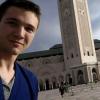Among the most fascinating places I have seen in my life is a vast permanent fair north of Moscow. In this under-the-radar park you will witness a Soviet era nostalgia like nowhere else. Let me introduce you to VDNKh.
The idea was to take a land the size of three golf courses and to transform it into a permanent World Fair to the glory of the many Soviet republics. Some thirty pavilions were then built between the 1930s and 1950s each representing a nation of the USSR. From Armenia to Uzbekistan, through Karelia and the unavoidable Russia, these pavilions now constitute the historical heart of the park. They each celebrate the uniqueness of one’s history, culture, gastronomy and arts. These few buildings somehow reflect the way the Kremlin projected the Soviet dream, what togetherness meant six decades ago.
Faithful to its time, the fair displays a pompous architecture (Art Nouveau, Gothic, often Neoclassical) with rich Soviet accents and the layout is just as sumptuous; one fountain follows the other on wide pedestrian avenues. VDNKh can surely boast its unique aesthetic. It’s a sort of living testimony of a bygone era, of an empire that is no more.
The park’s environment also plays a role in this. To make sure you know you are standing in the heart of a socialism showcase, you will find next to the entrance of the park the Russian Museum of Astronautic which proudly shares Russia’s prowess in its race towards space exploration. On the pedestal of his long metallic arrow, it reads: "After having triumphed over oppression and darkness, we forged wings of fire for our country and our century!”. Nothing less. Between this picturesque Conquerors of Space monument, the brutal Cosmos Hotel and the shadow of the Ostankino Tower, one of the highest in the world, it is difficult to ignore the echoes of the Cold War.
However, one of the most striking curiosities of the park for the Montrealer that I am was walking in front of an important symbol of my own city: the Expo 67 USSR pavilion. This Montreal World’s Fair icon still exists indeed. After leaving its native Notre-Dame island, it was entirely reassembled at VDNKh. Anyone who visited the Expo will remember this building of an extravagant modernity. In the middle of the Cold War, when Russia was more inaccessible and mysterious than ever, you could go to this place and chat with flesh-and-blood communists, admire Sputnik or watch a video (in colours!) of a laser surgery! My father did remember. He had often visited it during the summer of 67 accompanied by my grandfather, whom I never knew. Now, imagine the scene, when my father found himself on another continent, 45 years later, facing the exact same building of his youth, trading his father for a son. It was a beautiful moment.
This park also brings to light an era of misery, dictatorship and oppression. It is impossible to ignore the assimilating frame of this Stalin instigated project. You will see his mark, notice typically colored mosaics depicting scenes of proud proletarians at work adorned, necessarily, with red stars and sickles. You may also appreciate an iconic masterpiece of the Soviet era: Worker and Kolkhoz Woman. Used as the USSR pavilion at the 1937 Paris World’s Fair, this imposing statue then defied the Nazi pavilion it was just facing, an opposition that certainly marked European imagination at the dawn of a Great War.
VDNKh changed considerably during the 20th century, just like Russia actually. Shunned and almost abandoned at the turn of the century, its historic heart is now formally recognized as a heritage site and the government invests massively for the Muscovites to reclaim their park. The decrepit works are being restored, the avenues repaved and the facades revamped. Only the Ukrainian pavilion still lacks some shining, a sign of time (another one). Modern museums were added next to the central aisle. There is a huge skating rink in the winter as well as large-scale cultural events throughout the year. Today, museums, restaurants, cultural centers and galleries share this park with heavy artillery, space rockets and a Tupolev. It is an authentic concentrate of Soviet culture that covers the surface of Monaco. VDNKh was for me a compelling argument to dare step foot in Russia. And I was not disappointed!
 Simon-Pierre Poulin
Simon-Pierre Poulin
Véritable cascadeur culturel, photographe amateur, juriste à temps partiel et blogueur à ses heures, je ne me contente jamais des sentiers battus. Ma passion pour l’architecture et l’histoire m’amène toujours un peu plus loin. Suivez-moi!
